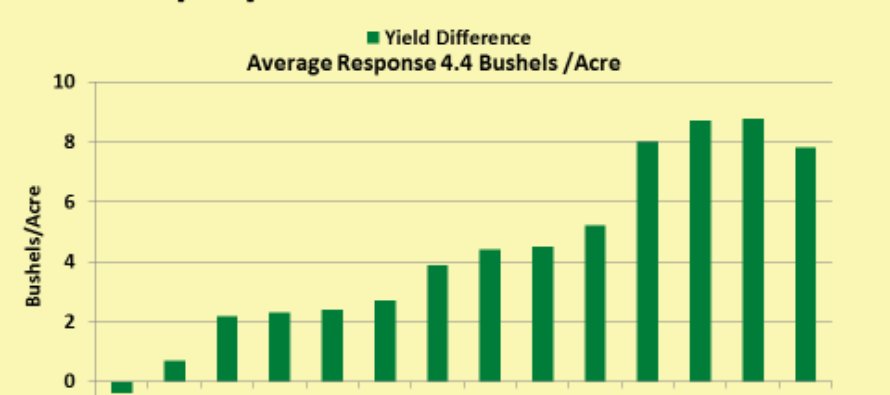Late Winter Pyrethroid Applications in Wheat for Aphid Control

Over the last several years we have seen a consistent response in wheat yield when a pyrethroid was used during the late winter months (late January-February). Often when this application goes out it is very difficult to find aphids at any appreciable level; however, they are there, but in very low numbers and generally close to the soil surface due to cold conditions. On average about mid to late March, depending on weather conditions, we see a huge increase in aphid numbers and start getting calls, particularly on acres that have not received an insecticide seed treatment in early planted wheat. Over the last several years where we have been testing the late winter pyrethroid application approach we have yet to see aphid populations build later in the spring. Since we know that the residual control of a pyrethroid is not that long, the reason is likely that the aphid populations that blow up in March are from the low numbers that are already present in late winter. In other words, we are likely removing the “seed†aphids while they are at very low numbers and are not getting much subsequent movement back into fields prior to beneficial insect emergence later in the season. Differences in aphid numbers between sprayed and unsprayed plots in late March are often dramatic. Although we do not see as much Barley yellow dwarf virus (BYDV) in our area, it is here, and this may be what some of the yield differences are attributed to (possibly late asymptomatic infections). However, in some years, BYDV can be observed later in the wheat season after the flag leaf emerges as yellow to purple leaves.
Below are yield results from four trials I have conducted over the last several years that had sprayed and unsprayed plots in them. Also, here is a link from Dr. Scott Stewart at The University of Tennessee (Click Here) where he has seen the same results in his testing program.
CLICK TO ENLARGE







Good stuff – Updated Tennessee data (including that harvested in 2013) were included on a graph in this article … http://news.utcrops.com/2014/01/spraying-aphids-in-wheat-the-next-several-weeks/
We’ve had a late wheat crop and cold winter in Tennessee, so we may see less benefit than usual (but just a guess).